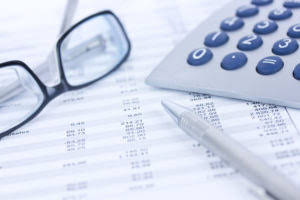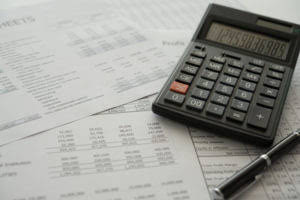Content

However, certain events, such as casualty losses, improvements or trade-ins can require you to make a basis adjustment. (Other members of your family do not use this computer.) Therefore, you can depreciate 2/3 of the cost of the computer. Wolters Kluwer is a global provider of professional information, software solutions, and services for clinicians, nurses, accountants, lawyers, and tax, finance, audit, risk, compliance, and regulatory sectors. The purpose of this is to match the cost of the assets to the revenues earned from using the asset. The most common reason for an asset to not qualify for depreciation is that the asset doesn’t truly depreciate. The Internal Revenue Code allows you to claim a tax deduction for the cost of the asset.
- Land is not depreciated at all, since it is considered to have an infinite lifespan.
- Assets were assigned a recovery period based on their asset depreciation range class life under pre-ERTA law, which was generally based on an asset’s useful life.
- Depreciable property is property that is of a character subject to the allowance for depreciation as determined under section 167 and the regulations under section 167.
- These costs include costs incurred initially to acquire or construct an item of property, plant and equipment and costs incurred subsequently to add to, replace part of, or service it.
- When an asset is sold, debit cash for the amount received and credit the asset account for its original cost.
- For information on what qualifies to be depreciated, or to determine the property’s placed in service date, see Publication 946.
Your depreciation deduction for the first year is based on the mid-month convention, in which you can deduct only half of the first month’s depreciation. If you begin renting a property on July 3rd, you can deduct 5½ months of depreciation for the first year – not the full six months that the rental was operating. For example, let’s say the assessed real estate tax value for your property is $100,000.
European Union Formally Adopts May 2020 Amendments
The cost of the new truck is $101,000 ($95,000 cash + $6,000 trade‐in allowance). The regulations provide rules for determining what the disposed asset is for these purposes, including special rules for certain types of property. For example, each building, including its structural components, is generally an asset for tax disposition purposes, although exceptions exist. A new equipment you purchased and placed in service in your timber business in June 2017 costs $10,000. Assuming you did not use Sec. 179 deduction, you could take a special bonus depreciation deduction equal to 50 percent of the purchase price. Your bonus depreciation deduction would be $5,000 (50 percent of $10,000). For eligible property placed in service in 2018, the special bonus depreciation rate is reduced to 40 percent of the cost of qualifying new business property.
Placing it in service does not have to mean that you’re actually using it. The IRS provides a class-life list of numerous types of property in Publication 946. Generally, if you’re depreciating property you placed in service before 1987, you must use the Accelerated Cost Recovery System or the same method you used in the past. For property placed in service after 1986, you generally must use the Modified Accelerated Cost Recovery System . Grow Your Business with InterNACHI® InterNACHI® membership is so much more than training and certification. Members get access to world-class resources to grow their business to the next level.
Depreciate Buildings, Not Land
Gains and losses on disposition or impairment of depreciable property or other capital assets. Whether you are transferring the ownership of machinery, breeding livestock or market livestock and crops, both buyer and seller need to be familiar with income tax provisions concerning the transfer of depreciable assets. Amortization deductions are treated separately, on Part VI of the Form 4562 (Lines 42-44). Once entered here, they are not added to the rest of your depreciation deductions.

When you buy property, many fees get lumped into the purchase price. You can expense some of these costs in the year you buy the property, while others have to be included in the value of property and depreciated. If an IRS auditor raises objections, you may need to bring in a real estate appraisal to support the allocation you use.
What Kind Of Assets Can You Depreciate?
Always hire an InterNACHI inspector to examine an investment property for defects before it is purchased. InterNACHI inspectors are also trained to uncover an assortment of safety and system defects, from pest infestation to the presence of lead-based paint and mold. IAS 16 Property, Plant and Equipment requires impairment testing and, if necessary, recognition for property, plant, and equipment. An item of property, plant, or equipment shall not be carried at more than recoverable amount.
Theoretically, this makes sense because the gains and losses from assets sold before and after the composite life will average themselves out. If the company exchanges its used truck for a forklift, receives a $6,000 trade‐in allowance, and pays $20,000 for the forklift, the loss on exchange is still $4,000. To simplify the depreciation calculation the IRS has developed tables which incorporate the recovery period, depreciation method and the specific conventions to be used in the acquisition and disposition year. Under MACRS an asset’s depreciable basis is multiplied by a percentage obtained from one of the IRS tables to determine the depreciation deduction. The tables can be found in IRS Publication 946, How to Depreciate Property.
- You are allowed to depreciate the value of a building you’ve purchased–but the value of the land it’s on can’t be written off.
- Please see the depreciation calculations in Examples 1, 2, 3, and 4 below.
- And finally, if you improve depreciable property, that improvement, at least for tax purposes,should be treated as a separate depreciable property.
- Mid-quarter convention – The mid-quarter convention applies to personal property and assumes that all property is placed in service and disposed of in the middle of the quarter of the year of acquisition and disposition.
- Depreciable propertymeans a property, which is used in any business or investment for earning income, and declines in value because of wear and tear, being old or passage of time.
- The fixed percentage is multiplied by the tax basis of assets in service to determine the capital allowance deduction.
In essence, the large initial investment is traded off for the opportunity to spread out the cash outflow over multiple years and cost of doing this is captured by the interest expense. Or extracted from it), land does not depreciate in value over time. In fact, agricultural land is generally viewed as a safe investment with a long track record of modest appreciation in value over time. Other examples of non-depreciable assets in agriculture include things like grazing permits and water rights. You can’t claim depreciation on your personal taxes because depreciation is a form of a business expense.
Effect On Cash
When you depreciate assets, you can plan how much money is written off each year, giving you more control over your finances. What if, for a single purchase price, you purchase an asset that is only partly depreciable? Before you can determine the depreciable tax basis of the asset, what you need to do is to allocate the price between the depreciable part and the non-depreciable part. Costs of assets consumed in producing goods are treated as cost of goods sold. Other costs of assets consumed in providing services or conducting business are an expense reducing income in the period of consumption under the matching principle. Straight-line depreciation is the simplest and most often used method. The straight-line depreciation is calculated by dividing the difference between assets cost and its expected salvage value by the number of years for its expected useful life.
- Depletion and amortization are similar concepts for natural resources and intangible assets, respectively.
- If you paid cash for this tractor, $140,000 would flow out of the business at the time of purchase and $20,000 would flow back into the business upon its sale at the end of 12 years.
- This allowance is taken after any allowable Section 179 deduction and before any other depreciation is allowed.
- Depreciable assets lose value, wear out, decay, get used up, or become obsolete as they are used in the business to generate income.
- When we buy a depreciable asset like a car, there is no Capital Loss at the time of sale.
- InterNACHI inspectors trained in residential and commercial property inspections can help streamline your purchase.
Depreciable assets are considered a part of the activities of your business and property; therefore, they are better integrated with your business or property through tax depreciation and Terminal Losses than as a Capital Loss. Generally, a Terminal Loss is generated when you sell assets depreciable property for less than their tax carrying value , and there are no other assets remaining in the CCA class. The final regulations’ rules on determining gain or loss are generally consistent with the proposed regulations that were issued under the old accelerated cost recovery system.
Which Asset Does Not Depreciate?
Because of this, it is important to have assistance in segregating out the costs of your building for depreciation purposes. The property is exchanged as part of the purchase price of a similar item, and the gain or loss is taken into consideration in the depreciation cost basis of the new item.

However, when the underlying property is sold, any undepreciated value of the additions or improvements must be added to the asset’s tax basis to compute your taxable gains. Some systems specify lives based on classes of property defined by the tax authority. Canada Revenue Agency specifies numerous classes based on the type of property and how it is used.
However, in most countries the life is based on business experience, and the method may be chosen from one of several acceptable methods. Certain types of assets, particularly vehicles and large pieces of equipment, are frequently exchanged for other tangible assets. For example, an old vehicle and a negotiated amount of cash may be exchanged for a new vehicle. When we buy a non-depreciable asset like land for example, and we sell it for less than what we paid for it, there is a Capital Loss. When we buy a depreciable asset like a car, there is no Capital Loss at the time of sale. Instead, we can claim CCA during the lifetime of that asset, and if it sells for less than the remaining UCC balance, we can claim a Terminal Loss assuming there are no other assets remaining in the CCA class.
She also worked as a paralegal in the areas of tax law, bankruptcy, and family law from 1996 to 2010. Beverly has written and edited hundreds of articles for finance and legal sites like GOBankingRates, PocketSense, LegalZoom, and more. In other words, what’s generally depreciable is income-producing propertythat you own and make use of for more than a year that typically will wear out or decline in value over time.
If the sale price were ever more than the original book value, then the gain above the original book value is recognized as a capital gain. If the truck sells for $15,000 when its net book value is $10,000, a gain of $5,000 occurs. The sale is recorded by debiting accumulated depreciation‐vehicles for $80,000, debiting cash for $15,000, crediting vehicles for $90,000, and crediting gain on sale of vehicles for $5,000. Suppose the $90,000 truck reaches the end of its useful life with a net book value of $10,000, but the truck is in such poor condition that a salvage yard simply agrees to haul it away for free. The entry to record the truck’s retirement debits accumulated depreciation‐vehicles for $80,000, debits loss on retirement of vehicles for $10,000, and credits vehicles for $90,000. Retirement occurs when a depreciable asset is taken out of service and no salvage value is received for the asset. In addition to removing the asset’s cost and accumulated depreciation from the books, the asset’s net book value, if it has any, is written off as a loss.
Just be sure that, at the top of the form, you write the name of the business or activity to which that copy of the form relates, along with its employer identification numberif you have one. A business will frequently acquire both land and an office building. In these cases, only the portion of the price that is attributed to the building is depreciable. Depreciable property is depreciated over the estimated useful lives of the assets, using principally the straight-line method. The other methods of calculating depreciation are the unit of production method and double declining balance method. Since it is used to lower the taxable income, depreciation reduces the tax burden.
If your total acquisitions are greater than $2,620,000 the maximum deduction begins to be phased out. The decision to use Section 179 must be made in the year the asset is put to use for business. Under most systems, a business or income-producing activity may be conducted by individuals https://www.bookstime.com/ or companies. The table below illustrates the units-of-production depreciation schedule of the asset. 10 × actual production will give the depreciation cost of the current year. Suppose, an asset has original cost $70,000, salvage value $10,000, and is expected to produce 6,000 units.
Depreciable property used in your trade or business, even if it is fully depreciated. Depreciable propertymeans a property, which is used in any business or investment for earning income, and declines in value because of wear and tear, being old or passage of time. Knowing what can and cannot be depreciated in a year will help business avoid high front-loaded expenses and highly variable financial results. Intangible property such as patents, copyrights, computer software can be depreciated. Depreciation is an accounting method that a business uses to account for the declining value of its assets. You stop depreciating a business asset when either one of two events occur. Second, that asset could reach the end of its useful life—then it is no longer is being depreciated.
Depreciable property is property that is of a character subject to the allowance for depreciation as determined under section 167 and the regulations under section 167. Depreciable property used in your trade or business, even if it is fully de- preciated. Depreciable property financed with small issue IDBs must be depreciated, however, using the straight-line method. Business assets that deteriorate over time but last at least one year usually qualify for depreciation. While buying power changes over time as the result of inflation and deflation, cash itself maintains the same value. A $20 bill will always be worth $20, even when $20 doesn’t buy as much as it used to.
